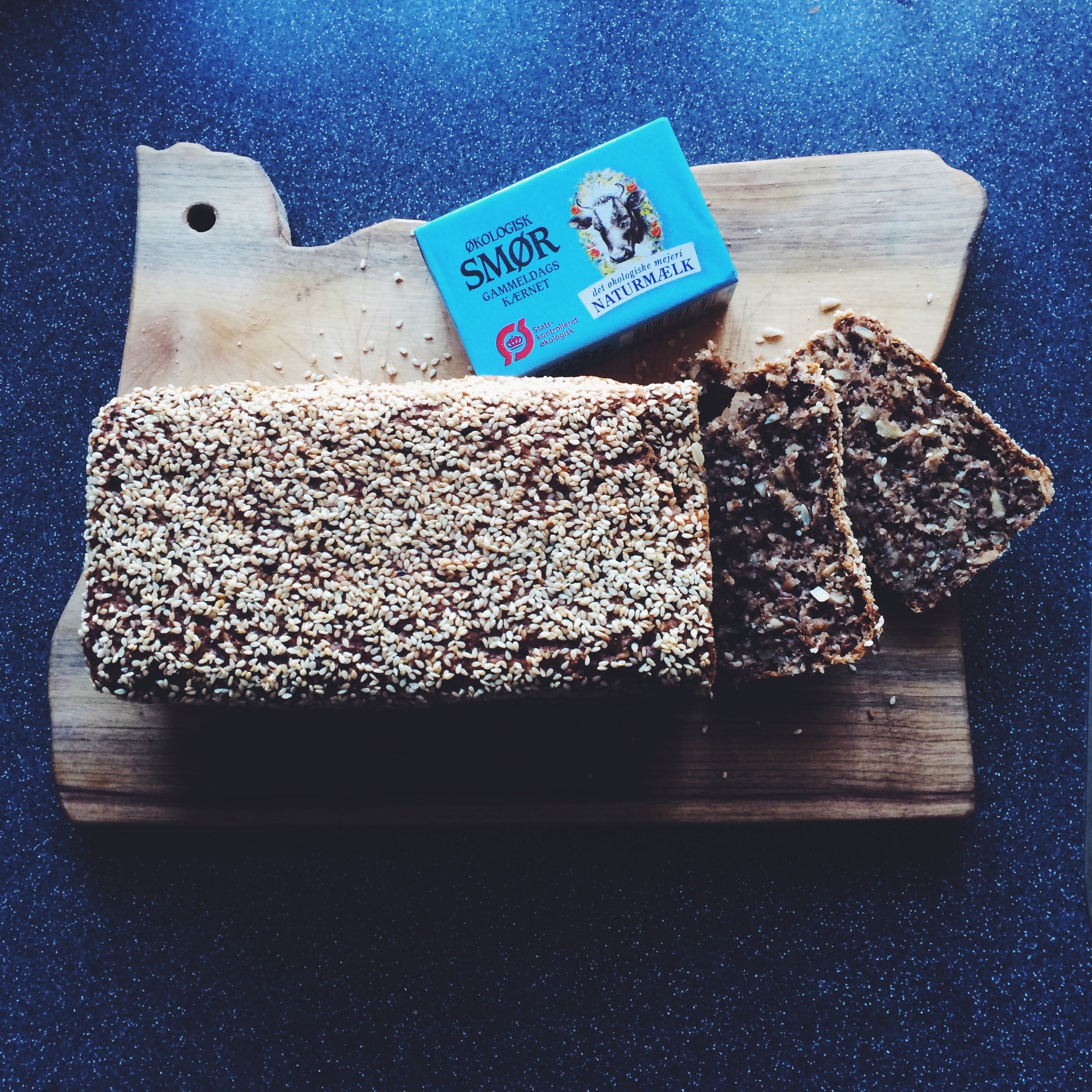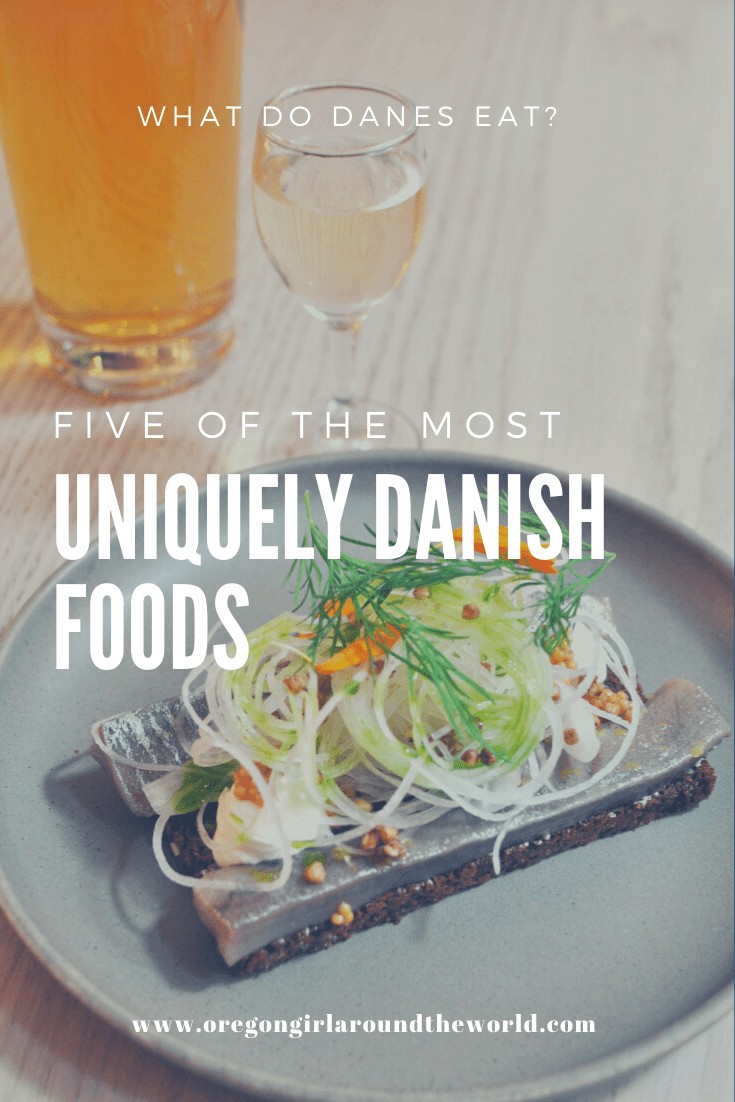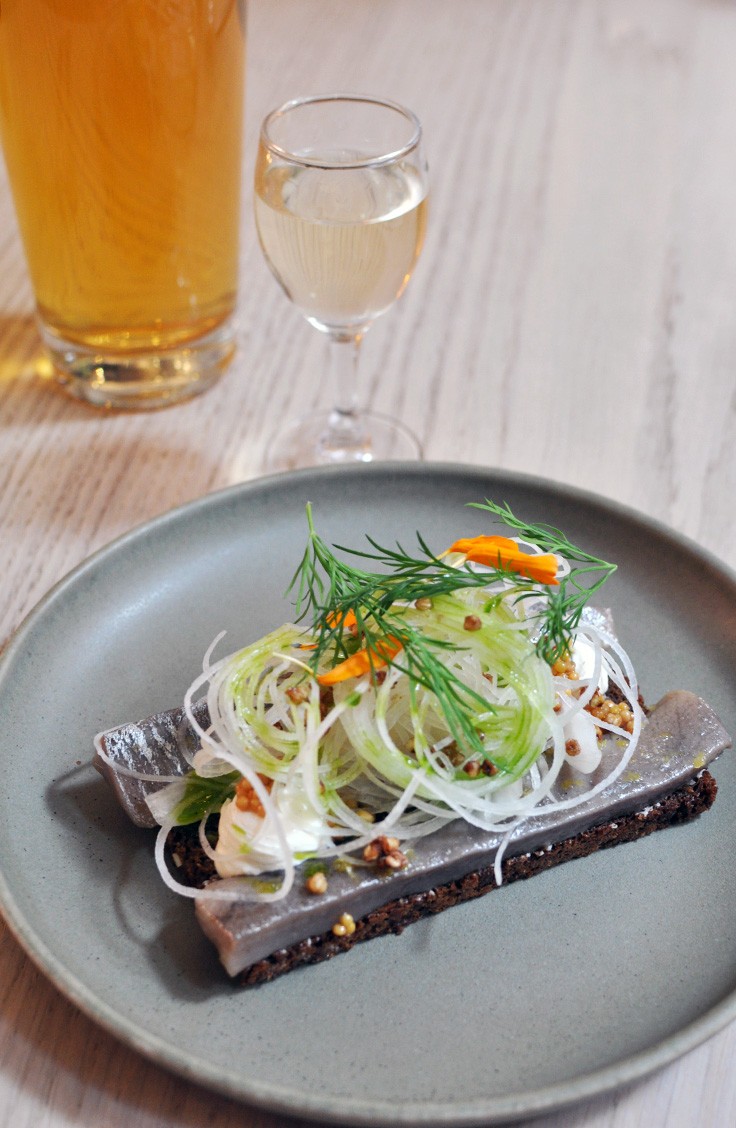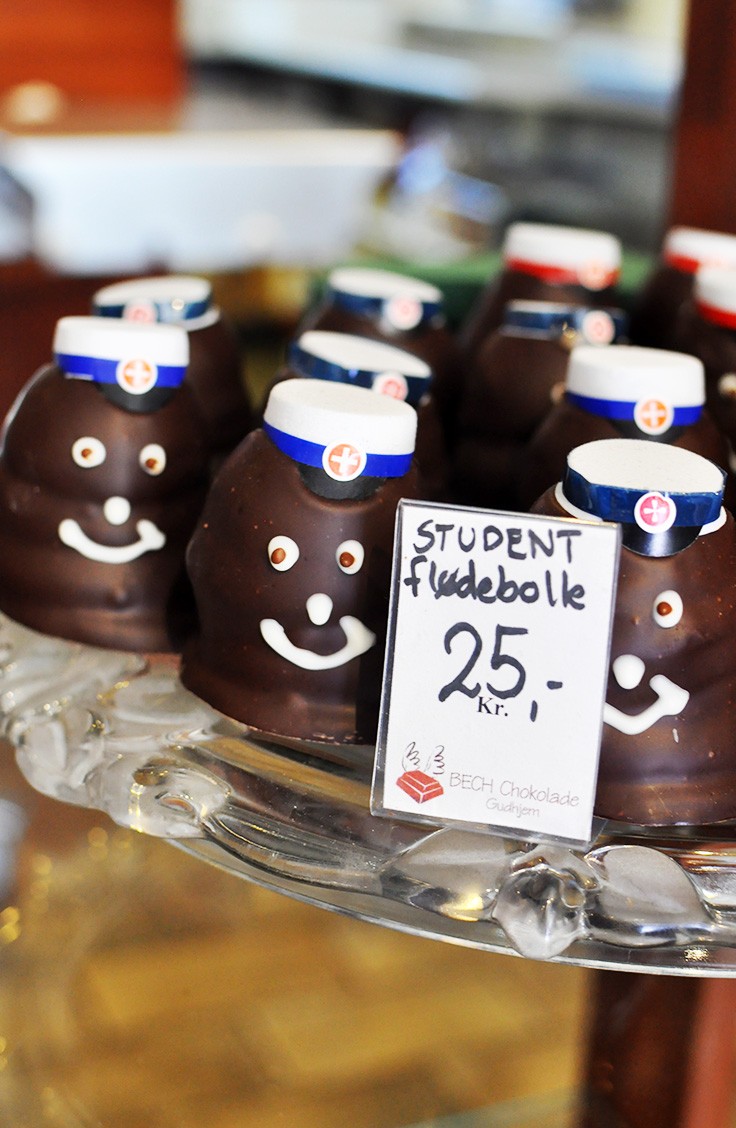Discover the essence of Danish cuisine! Join FOODS.EDU.VN as we explore traditional dishes, modern trends, and the cultural significance of Danish gastronomy. Let’s uncover the delightful world of Nordic flavors together.
1. Unveiling the Essence of Danish Cuisine
What Is Danish Food? It’s more than just wienerbrød (Viennese bread); it’s a rich tapestry of flavors, traditions, and culinary innovation. Danish food, or dansk mad, is characterized by its simplicity, use of fresh, local ingredients, and a focus on hearty, comforting dishes. From the iconic smørrebrød to the festive flæskesteg, Danish cuisine offers a unique and satisfying culinary experience. This guide, brought to you by FOODS.EDU.VN, explores the heart of Danish gastronomy, revealing its history, key ingredients, and most beloved dishes. Dive into a world where traditional cooking meets modern culinary trends, creating a vibrant food scene that delights locals and visitors alike. Delve deeper into Nordic flavors and discover the secrets of Danish cooking with FOODS.EDU.VN.
1.1. Historical Roots and Influences
The history of Danish food is deeply intertwined with the country’s agricultural past and its geographical location. For centuries, Danish cuisine relied heavily on what could be grown or raised locally, resulting in a diet rich in grains, root vegetables, dairy products, and pork. The surrounding seas provided an abundance of fish and seafood, which also became staples of the Danish diet.
Trade and cultural exchange have also played a significant role in shaping Danish cuisine. In the Middle Ages, spices and ingredients from other parts of Europe began to make their way into Danish kitchens, adding new flavors and dimensions to traditional dishes. More recently, globalization has brought new culinary influences from around the world, inspiring Danish chefs to experiment with new techniques and ingredients.
1.2. Key Ingredients in Danish Cooking
Danish cuisine is characterized by its use of fresh, seasonal ingredients. Some of the most important ingredients include:
- Rye bread (rugbrød): A dark, dense bread made from rye flour, rugbrød is a staple of the Danish diet and forms the base for smørrebrød.
- Pork: Pork is the most popular meat in Denmark, and it is used in a wide variety of dishes, from flæskesteg to frikadeller (meatballs).
- Potatoes: Potatoes are another essential ingredient in Danish cooking, often served as a side dish or used in stews and casseroles.
- Dairy products: Denmark has a long tradition of dairy farming, and dairy products such as milk, butter, cheese, and cream are used extensively in Danish cuisine.
- Fish and seafood: With its long coastline, Denmark has access to a wide variety of fish and seafood, including herring, cod, salmon, and shrimp.
1.3. Exploring Traditional Danish Dishes
Danish cuisine is full of hearty and comforting dishes that reflect the country’s culinary heritage. Here are some of the most iconic traditional Danish dishes:
- Smørrebrød: Open-faced sandwiches on rye bread, topped with a variety of ingredients such as herring, roast beef, shrimp, or eggs.
- Flæskesteg: Roasted pork with crackling, traditionally served with potatoes, red cabbage, and brown gravy.
- Frikadeller: Danish meatballs, typically made from a mixture of pork and beef, seasoned with onions, breadcrumbs, and spices.
- Kartofler med persillesovs: Boiled potatoes with parsley sauce, a simple but classic Danish side dish.
- Æbleskiver: Small, round pancakes traditionally served during Christmas time, often accompanied by jam and powdered sugar.
2. Delving Deeper into Danish Food Culture
Danish food culture goes beyond just the dishes themselves; it’s about the way food is enjoyed and shared. Meals are often seen as an opportunity to socialize and connect with family and friends.
2.1. The Importance of Hygge in Danish Dining
Hygge, a Danish word that roughly translates to “coziness” or “well-being,” plays a central role in Danish food culture. Hygge is about creating a warm, inviting atmosphere and enjoying simple pleasures, such as sharing a meal with loved ones.
In the context of dining, hygge means creating a comfortable and relaxed setting, lighting candles, and taking the time to savor each bite. It’s about appreciating the company of those around you and enjoying the moment.
2.2. Danish Meal Times and Traditions
Danes typically eat three meals a day: breakfast (morgenmad), lunch (frokost), and dinner (aftensmad). Breakfast is often a simple affair, consisting of bread, cheese, and coffee. Lunch is typically smørrebrød or another light meal. Dinner is the main meal of the day, and it is often a hearty, home-cooked dish.
One important Danish food tradition is the julefrokost, or Christmas lunch. This is a festive meal that is typically enjoyed with family, friends, or colleagues during the Christmas season. The julefrokost usually includes a variety of traditional Danish dishes, such as flæskesteg, sild (herring), and risalamande (rice pudding).
2.3. Exploring Danish Pastries and Desserts
No exploration of Danish food culture would be complete without mentioning Danish pastries and desserts. Denmark is famous for its wienerbrød, or Viennese bread, a flaky pastry that comes in a variety of shapes and flavors. Other popular Danish pastries include kanelsnegle (cinnamon snails) and tebirkes (poppy seed pastries).
For desserts, risalamande, a creamy rice pudding served with cherry sauce, is a beloved classic. Another popular dessert is koldskål, a cold buttermilk soup often eaten with kammerjunkere (small, sweet biscuits).
3. Navigating the Modern Danish Food Scene
While traditional Danish dishes remain popular, the Danish food scene has also evolved in recent years, with a growing emphasis on innovation, sustainability, and New Nordic cuisine.
3.1. The Rise of New Nordic Cuisine
New Nordic cuisine is a culinary movement that emphasizes the use of local, seasonal ingredients and traditional cooking techniques. It has had a significant impact on the Danish food scene, inspiring chefs to create innovative dishes that showcase the flavors of the Nordic region.
Restaurants like Noma in Copenhagen, which has been ranked as one of the world’s best restaurants, have played a key role in promoting New Nordic cuisine and putting Danish food on the global culinary map.
3.2. Sustainability and Ethical Eating in Denmark
Sustainability and ethical eating are becoming increasingly important to Danish consumers, and many restaurants and food producers are responding by adopting more sustainable practices. This includes using organic ingredients, reducing food waste, and supporting local farmers and producers.
Danish chefs are also exploring new ways to use overlooked or underutilized ingredients, such as seaweed and insects, in their cooking.
3.3. Food Trends Shaping Danish Cuisine
Several food trends are currently shaping Danish cuisine, including:
- Fermentation: Fermented foods like kimchi, sauerkraut, and kombucha are gaining popularity in Denmark for their health benefits and unique flavors.
- Plant-based eating: As more people adopt vegetarian or vegan diets, there is a growing demand for plant-based options in Danish restaurants and supermarkets.
- Street food: Street food markets and food trucks are becoming increasingly popular in Danish cities, offering a diverse range of cuisines and flavors.
4. Embark on a Danish Culinary Adventure
Ready to experience the flavors of Denmark? Here are some tips for embarking on a Danish culinary adventure:
4.1. Must-Try Dishes and Where to Find Them
- Smørrebrød: Aamanns 1921, Restaurant Kronborg
- Flæskesteg: Restaurant Schønnemann, যেকোনো ট্র্যাডিশনাল রেস্টুরেন্ট
- Frikadeller: আপনার নিজের রান্নাঘর, যেকোনো ট্র্যাডিশনাল রেস্টুরেন্ট
- Æbleskiver: যেকোনো ক্রিসমাস মার্কেট (নভেম্বর-ডিসেম্বর মাস)
- Flødeboller: Summerbird Chocolates, Bech Chokolade
4.2. Tips for Dining Out in Denmark
- Reservations: It is always a good idea to make a reservation, particularly for popular restaurants.
- Tipping: Tipping is not required in Denmark, as service is typically included in the bill.
- Table Manners: Proper table manners are appreciated in Denmark. Keep your elbows off the table, and wait for everyone to be served before you start eating.
4.3. Bringing Danish Flavors Home
Want to recreate Danish dishes in your own kitchen? Here are some tips for bringing Danish flavors home:
- Source authentic ingredients: Look for high-quality rye bread, Danish pork, and other authentic ingredients.
- Experiment with traditional recipes: Try making smørrebrød, frikadeller, or other classic Danish dishes.
- Embrace hygge: Create a cozy atmosphere and enjoy your Danish meal with loved ones.
5. The Nutritional Landscape of Danish Food
Danish cuisine, like any national diet, presents both nutritional benefits and potential drawbacks. Understanding its composition can help you make informed choices while enjoying its flavors.
5.1. Macronutrient Balance: A Closer Look
Traditionally, Danish food leans towards a higher fat content, largely due to the prevalence of pork and dairy products. However, modern interpretations are increasingly incorporating leaner proteins and healthier fats.
| Macronutrient | Traditional Danish Diet (Approximate) | Modern Danish Diet (Approximate) |
|---|---|---|
| Carbohydrates | 40-50% | 45-55% |
| Protein | 15-25% | 20-30% |
| Fat | 30-40% | 25-35% |





Note: These are approximate values and can vary significantly based on individual choices and specific dishes.
5.2. Vitamins and Minerals: Hidden Gems
Danish food offers several valuable vitamins and minerals:
- Vitamin D: Fish like herring and mackerel, commonly consumed in smørrebrød, are excellent sources of Vitamin D, crucial for bone health and immune function.
- B Vitamins: Pork, a staple in Danish cuisine, provides B vitamins essential for energy metabolism and nerve function.
- Calcium: Dairy products like cheese and milk are rich in calcium, vital for bone health.
- Iron: Rye bread, a cornerstone of the Danish diet, contributes iron, important for red blood cell production.
5.3. Potential Health Considerations
While Danish cuisine offers nutritional benefits, it’s important to be mindful of potential health considerations:
- Saturated Fat: The high consumption of pork and dairy can lead to a high intake of saturated fat, which may raise cholesterol levels.
- Sodium: Processed meats and some traditional dishes can be high in sodium.
- Fiber: While rye bread provides fiber, the overall fiber content of the Danish diet can be improved by incorporating more fruits and vegetables.
5.4. Making Healthier Choices
You can enjoy Danish cuisine while making healthier choices:
- Choose Leaner Meats: Opt for leaner cuts of pork or incorporate more fish and poultry.
- Increase Vegetable Intake: Add more vegetables to your meals to boost fiber and nutrient intake.
- Control Portion Sizes: Be mindful of portion sizes, especially when consuming rich dishes.
- Embrace Modern Interpretations: Explore modern Danish cuisine, which often features healthier ingredients and cooking methods.
6. Danish Food Around the World: A Global Influence
While deeply rooted in its own traditions, Danish cuisine has also exerted a global influence, inspiring chefs and home cooks around the world.
)
6.1. The Spread of Danish Pastries
Perhaps the most recognizable Danish culinary export is the wienerbrød, or Danish pastry. These flaky, buttery pastries are enjoyed in countless variations around the world.
6.2. The New Nordic Wave
The New Nordic cuisine movement has inspired chefs worldwide to embrace local, seasonal ingredients and innovative cooking techniques. This has led to a greater appreciation for Nordic flavors and culinary traditions.
6.3. Danish Design and Food Presentation
Danish design principles, characterized by simplicity, functionality, and aesthetics, have also influenced food presentation around the world. The emphasis on clean lines, natural materials, and mindful plating has elevated the dining experience in many cultures.
6.4. Examples of Danish-Inspired Cuisine
- Smørrebrød-inspired open-faced sandwiches: Found in cafes and restaurants worldwide, often with local ingredients.
- Nordic-inspired tasting menus: Featuring seasonal ingredients and innovative techniques, inspired by the New Nordic movement.
- Danish bakeries: Offering a range of Danish pastries and breads, adapted to local tastes and preferences.
7. The Art of Snaps: Exploring Danish Akvavit
No exploration of Danish cuisine would be complete without delving into the world of akvavit, a traditional spirit deeply intertwined with Danish food culture.
7.1. What is Akvavit?
Akvavit is a flavored spirit, typically distilled from grain or potatoes and flavored with caraway and/or dill. Other common botanicals include cumin, fennel, anise, and citrus peel. The name “akvavit” comes from the Latin aqua vitae, meaning “water of life.”
7.2. History and Tradition
Akvavit has been produced in Scandinavia since the 15th century. It was originally used for medicinal purposes but soon became a popular drink, particularly during festive occasions. In Denmark, akvavit is traditionally enjoyed with smørrebrød and other savory dishes.
7.3. Key Characteristics of Danish Akvavit
Danish akvavit is typically clear and has a relatively high alcohol content (around 40% ABV). The flavor profile varies depending on the specific botanicals used, but caraway and dill are always prominent.
7.4. Serving and Enjoying Akvavit
Akvavit is typically served chilled, in small glasses. It is often enjoyed as a shot, accompanying a meal, or as part of a celebratory toast. When drinking akvavit with a group, it is customary to make eye contact and say “Skål!” (Cheers!) before taking a sip.
7.5. Popular Danish Akvavit Brands
- Aalborg Akvavit: One of the most well-known and widely available Danish akvavit brands.
- Bornholm Akvavit: A regional akvavit from the island of Bornholm, known for its distinctive flavor.
- Linie Aquavit: While technically Norwegian, Linie Aquavit is aged in sherry casks that are shipped across the equator, giving it a unique flavor profile that is also appreciated in Denmark.
8. Danish Food and Festive Occasions
Food plays a central role in Danish celebrations, with specific dishes associated with different holidays and traditions.
8.1. Christmas (Jul)
Christmas is the most important holiday in Denmark, and food is a major part of the festivities. Key dishes include:
- Flæskesteg: Roasted pork with crackling, served with potatoes, red cabbage, and brown gravy.
- Risalamande: A creamy rice pudding served with warm cherry sauce and chopped almonds. A whole almond is hidden in the pudding, and the person who finds it wins a prize.
- Æbleskiver: Small, round pancakes served with jam and powdered sugar.
8.2. Easter (Påske)
Easter is another important holiday in Denmark, and it is also celebrated with special foods. Key dishes include:
- Lamb: Roasted lamb is a traditional Easter dish in Denmark.
- Eggs: Eggs are another symbol of Easter, and they are often served in a variety of ways, such as hard-boiled, deviled, or in egg salad.
- Easter beer (Påskebryg): A special beer brewed for Easter, typically stronger and more flavorful than regular beer.
8.3. Midsummer (Sankt Hans)
Midsummer is celebrated on June 23rd with bonfires, singing, and food. Traditional foods for Midsummer include:
- Grilled food: Grilling is a popular activity during Midsummer, and people often grill sausages, meat, and vegetables.
- Salads: Fresh salads with seasonal ingredients are also common.
- Strawberry cake: A light and refreshing dessert made with fresh strawberries and cream.
9. Sourcing Danish Ingredients: A Guide for Food Enthusiasts
Whether you’re a seasoned chef or a home cook eager to explore Danish cuisine, sourcing authentic ingredients is key to recreating those cherished flavors.
9.1. Online Retailers: A World of Danish Delights at Your Fingertips
The internet has made it easier than ever to access Danish ingredients, no matter where you are in the world. Many online retailers specialize in Scandinavian foods, offering a wide range of products like:
- Rye Flour: Essential for baking authentic rugbrød.
- Pickled Herring: In various flavors, a must-have for smørrebrød.
- Akvavit: To complete your Danish culinary experience.
- Licorice: Both sweet and salty varieties, a popular Danish treat.
Pro Tip: Compare prices and shipping costs from different retailers before making a purchase. Look for retailers with good reviews and a reputation for quality.
9.2. Local Scandinavian Stores: A Treasure Trove of Authentic Flavors
If you’re lucky enough to have a Scandinavian store in your area, it’s a fantastic place to find authentic Danish ingredients. These stores often carry a wider selection of products than mainstream supermarkets, including:
- Specialty Cheeses: Like Havarti and Esrom.
- Cured Meats: Such as rullepølse and leverpostej.
- Imported Sweets: Like flødeboller and marzipan.
- Unique Spices: Used in traditional Danish recipes.
Pro Tip: Don’t hesitate to ask the staff for recommendations or advice on how to use specific ingredients. They can often provide valuable insights and tips.
9.3. Specialty Food Stores: Expanding Your Culinary Horizons
Many specialty food stores carry a selection of imported ingredients, including some from Denmark. Check your local gourmet shops for:
- High-Quality Seafood: For smørrebrød or other fish dishes.
- Artisan Breads: To complement your Danish meals.
- Imported Jams and Preserves: To enjoy with your pastries or rugbrød.
Pro Tip: Call ahead to see if the store carries the specific ingredients you’re looking for.
9.4. Farmers Markets: Fresh, Local Alternatives
While you may not find exclusively Danish ingredients at your local farmers market, you can often find fresh, high-quality alternatives:
- Seasonal Vegetables: To incorporate into your Danish-inspired dishes.
- Fresh Herbs: To add flavor and aroma to your cooking.
- Local Meats: To substitute for traditional Danish cuts.
Pro Tip: Experiment with local ingredients to create your own unique interpretations of Danish cuisine.
10. Demystifying Danish Cooking Techniques
Danish cuisine, while seemingly simple, often relies on specific techniques that contribute to its distinctive flavors and textures. Mastering these techniques will elevate your Danish cooking to new heights.
10.1. The Art of Pickling: Preserving Flavors and Traditions
Pickling is a time-honored tradition in Denmark, used to preserve seasonal ingredients and create unique flavor profiles. Common pickled items include herring, cucumbers, and beets.
Key Technique: The key to successful pickling is to use a balanced brine of vinegar, sugar, and spices. Experiment with different spice combinations to create your own signature pickles.
10.2. The Magic of Rye Bread Baking: A Labor of Love
Baking rugbrød is a labor of love that requires patience and attention to detail. The process involves creating a sourdough starter, which gives the bread its characteristic tangy flavor.
Key Technique: Use high-quality rye flour and allow the dough to rise slowly for optimal flavor development.
10.3. The Secrets of Crispy Pork Crackling: A Culinary Delight
Achieving perfectly crispy pork crackling (flæskesvær) is a culinary art form. The key is to score the skin properly and roast the pork at a high temperature.
Key Technique: Score the pork skin deeply, without cutting into the meat. Roast at a high temperature (around 220°C or 425°F) until the skin is puffed and crispy.
10.4. The Simplicity of Parsley Sauce: A Creamy Classic
Parsley sauce (persillesovs) is a simple but essential accompaniment to many Danish dishes. The sauce is made with a roux of butter and flour, milk, and fresh parsley.
Key Technique: Use fresh, high-quality parsley for the best flavor. Don’t overcook the sauce, as this can cause it to become thick and gloppy.
10.5. Embracing “Hygge” in the Kitchen: Creating a Cozy Atmosphere
More than just a cooking technique, “hygge” is a Danish philosophy that emphasizes coziness, comfort, and togetherness. Embrace “hygge” in the kitchen by:
- Lighting candles
- Playing relaxing music
- Inviting friends or family to cook with you
- Savoring each step of the cooking process
FAQ: Your Questions About Danish Food Answered
Here are some frequently asked questions about Danish food:
- What is the most popular food in Denmark? Smørrebrød (open-faced sandwiches) is arguably the most iconic and popular food in Denmark.
- What is a traditional Danish breakfast? A traditional Danish breakfast often includes rye bread, cheese, cold cuts, and coffee.
- What is hygge and how does it relate to Danish food? Hygge is a Danish concept that emphasizes coziness, comfort, and togetherness. It plays a central role in Danish food culture, encouraging people to enjoy meals in a relaxed and convivial atmosphere.
- What are some popular Danish desserts? Risalamande (rice pudding with cherry sauce) and æbleskiver (small, round pancakes) are popular Danish desserts, especially during Christmas.
- Is Danish food healthy? Danish food can be part of a healthy diet if consumed in moderation and with an emphasis on fresh, seasonal ingredients.
- Where can I find authentic Danish ingredients? You can find authentic Danish ingredients at online retailers, Scandinavian stores, and specialty food stores.
- What is akvavit? Akvavit is a traditional Scandinavian spirit flavored with caraway and/or dill.
- What is New Nordic cuisine? New Nordic cuisine is a culinary movement that emphasizes the use of local, seasonal ingredients and traditional cooking techniques.
- What are some food trends shaping Danish cuisine? Food trends shaping Danish cuisine include fermentation, plant-based eating, and street food.
- How can I bring Danish flavors home? You can bring Danish flavors home by sourcing authentic ingredients, experimenting with traditional recipes, and embracing hygge in the kitchen.
Ready to explore the delightful world of Danish cuisine? Visit FOODS.EDU.VN for more in-depth articles, recipes, and culinary insights. Discover the secrets of Nordic flavors and embark on a delicious journey with us!
(Contact: 1946 Campus Dr, Hyde Park, NY 12538, United States. Whatsapp: +1 845-452-9600. Website: foods.edu.vn)